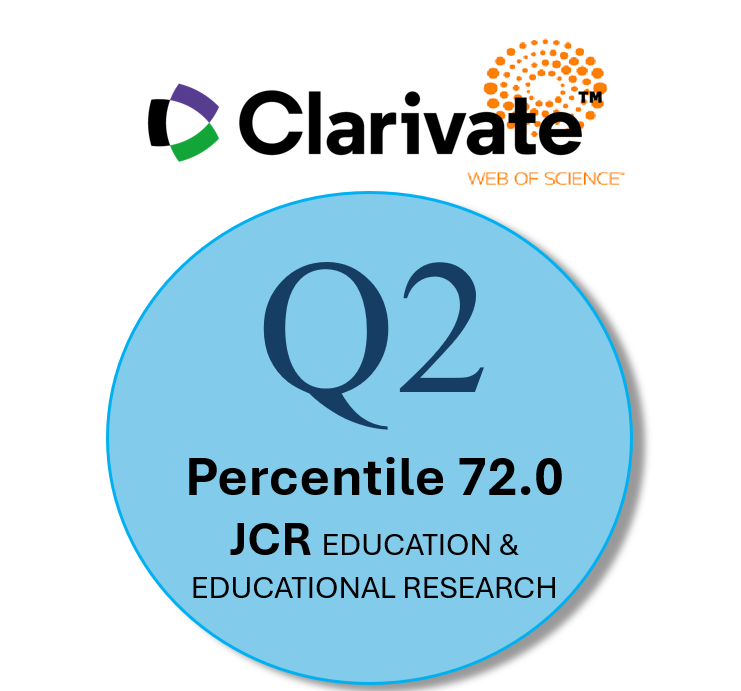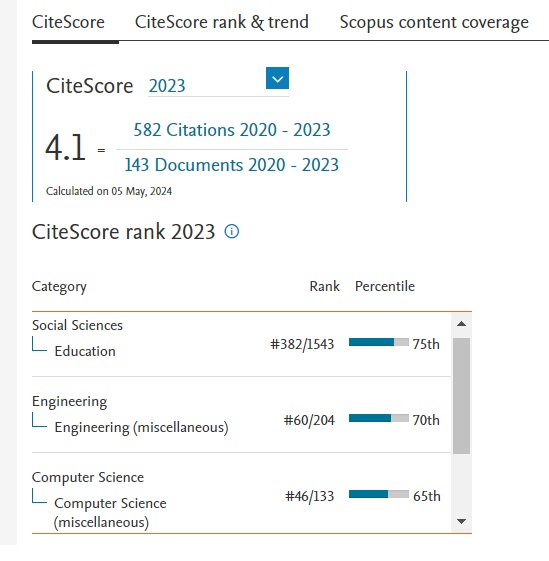Redes sociales y Tecnologías de la Información y la Comunicación en Educación: aprendizaje colaborativo, diferencias de género, edad y preferencias
Resumen
Las redes sociales despiertan un inusitado interés social, profesional y académico. La carencia y necesidad de estudios e investigaciones que ofrezcan resultados y conclusiones a la posible relación entre el uso de las Redes Sociales y su vinculación con el trabajo colaborativo y otras variables (género, edad, país donde se cursan los estudios universitarios, entre otras), son el detonante del estudio que se presenta en el artículo, y cuyos propósitos generales están destinados a conocer si existen diferencias significativas entre el uso de éstas y dichas variables. Además, se pretende conocer qué herramientas sociales prefieren los discentes en su práctica didáctica. El instrumento empleado para llevar a cabo el trabajo es el elaborado por Anderson et al. (2009) denominado “Social Software survey used with unpaced undergrad”. Algunos de los resultados encontrados muestran que sí existen diferencias significativas en cuestiones de género, mostrando las mujeres mayores habilidades en movilización de herramientas y los hombres en habilidades técnicas-tecnológicas, así como diferencias con respecto a la edad, entre otras.Descargas
-
Resumen15382
-
PDF7885
Las obras que se publican en esta revista están sujetas a los siguientes términos:
1. El Servicio de Publicaciones de la Universidad de Murcia (la editorial) conserva los derechos patrimoniales (copyright) de las obras publicadas, y favorece y permite la reutilización de las mismas bajo la licencia de uso indicada en el punto 2.
2. Las obras se publican en la edición electrónica de la revista bajo una licencia Creative Commons Reconocimiento-NoComercial-SinObraDerivada 3.0 España (texto legal). Se pueden copiar, usar, difundir, transmitir y exponer públicamente, siempre que: i) se cite la autoría y la fuente original de su publicación (revista, editorial y URL de la obra); ii) no se usen para fines comerciales; iii) se mencione la existencia y especificaciones de esta licencia de uso.
3. Condiciones de auto-archivo. Se permite y se anima a los autores a difundir electrónicamente las versiones pre-print (versión antes de ser evaluada) y/o post-print (versión evaluada y aceptada para su publicación) de sus obras antes de su publicación, ya que favorece su circulación y difusión más temprana y con ello un posible aumento en su citación y alcance entre la comunidad académica. Color RoMEO: verde.














